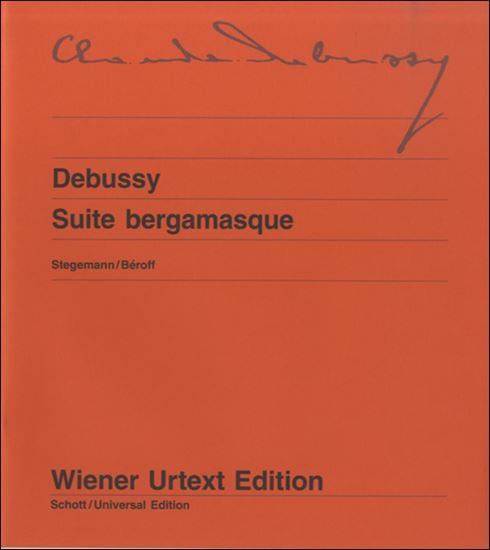Debussy, Claude Achille : Suite bergamasque "Prélude"
Work Overview
Genre:suite
Total Playing Time:4 min 00 sec
Copyright:Public Domain
Commentary (2)
Author : Ooi, Kazurou
Last Updated: July 21, 2018
[Open]
Author : Ooi, Kazurou
From the outset, many performances tend to be mechanical, like an etude. This prelude should not convey an agitated atmosphere. It proceeds improvisationally, with slow, large motions.
Without pressure, take ample time. This nuance is required from the very first measure. Upon reaching the chord on the third beat of measure 1, sustain the half-note chord fully, as if a tenuto marking were written. Then, in measure 2, descend slowly, as if something sparkling were falling from a high place. And as indicated at the beginning, use tempo rubato, playing as if moving away from the metronome.
These initial two measures are the most important statement, and measures 3-6 proceed p, without significantly increasing tension. Perhaps only the A on the second beat of measure 5 should be treated with a little more importance.
Measures 7-8 are similar to measures 1-2, but the chord color differs from the first instance in measure 9, so express it accordingly.
Many performers tend to create an agitated atmosphere in measures 11-14. This means they push too much, resulting in a rushed and pressured outcome. First, in measure 11, when reaching the D-F on the second beat, arrive slowly, just as you did on the third beat of measure 1. Do not rush into it. Then, in measure 12, all chords have tenuto markings. Therefore, sustain each chord fully and never rush. Furthermore, do not apply excessive crescendo. Keep the crescendo within the p dynamic range.
Measures 18-19 mark the end of a section, but here too, never rush. In measure 19, play as if slowly fading away. A blurred sound quality is desirable.
In measure 20, the fourth beat tends to be played mechanically and strongly due to its technical difficulty. Instead, play it resonantly, like a shooting star, making it truly inconspicuous. Furthermore, there is no need to be precise with the tempo; a somewhat slower pace is acceptable. In any case, avoid mechanical playing.
The same applies from measure 26 onwards. Play softly and p. Particularly in measure 28, the color changes. Change the color by using the soft pedal, for example. Regarding measure 35, while there may be various opinions, this author would release the pedal and observe the staccato.
Measure 43 marks the end of this section. Observe dim. molt. dim., maintaining pp with the image of light completely fading away into darkness.
From measure 44 towards measure 52, again, never rush. Also, measure 52 is mezzo forte. Ensure it is not too loud. Furthermore, the two eighth notes (two Fs) in a separate voice appearing from measure 52 are resonance. As indicated by the p marking, these should also never be played loudly.
From measure 56 onwards, the color changes again. Reaching measure 60, gradually increase the volume towards measure 66. Then, return to the A section.
Now, let's consider measure 76. On the first beat, there is a whole note in octaves. You cannot sustain this with your fingers alone. Therefore, you use the pedal to sustain the whole note, but then the other eighth notes and sixteenth notes become blurred. While some may not mind this, one method is to press and hold the pedal after playing the whole note, and then, from around the third beat of this measure, quickly and precisely change the pedal on each beat. This way, the sixteenth notes and eighth notes will not be blurred, and the whole note can also be sustained. Please try it.
Author : Wada, Mayuko
Last Updated: January 9, 2019
[Open]
Author : Wada, Mayuko
I. Prelude
Moderato, 4/4 time. An impressive melody, supported by chords, develops through rhythmic variations and the repetition of phrases.
PTNA & Partner Channel Videos(6items)
Sheet Music
Scores List (10)

(株)音楽之友社

(株)全音楽譜出版社

ハンナ(ショパン)

(株)ドレミ楽譜出版社

(株)全音楽譜出版社

デュラン社

ヘンレ社(ヤマハ)

ロケットミュージック








